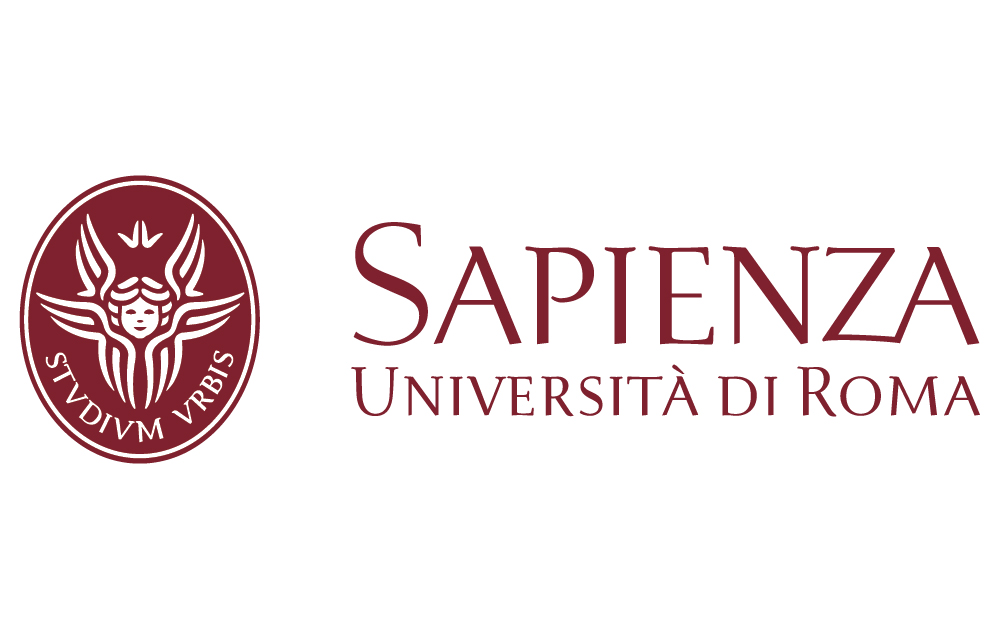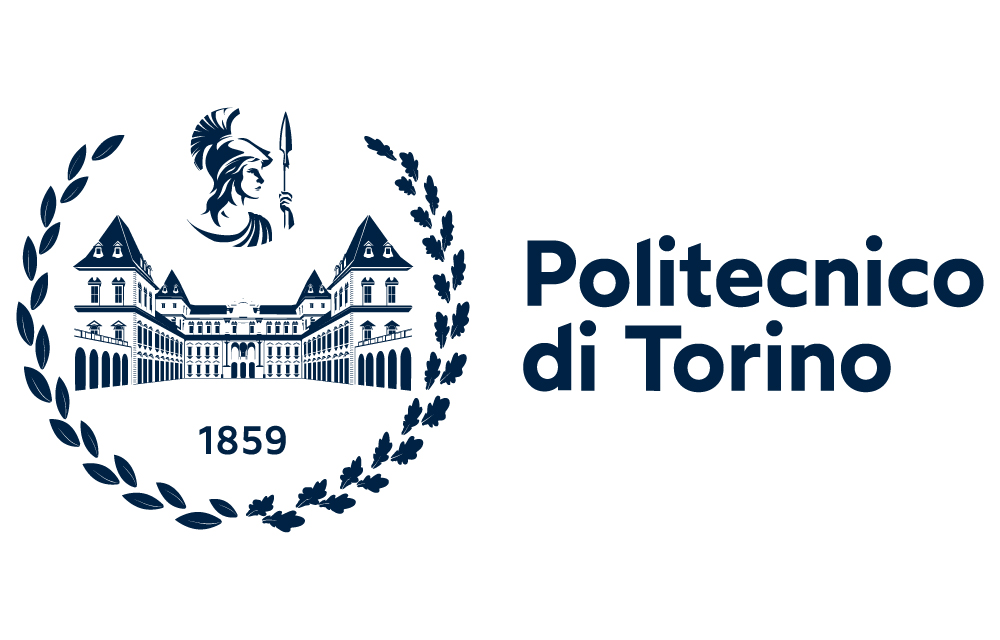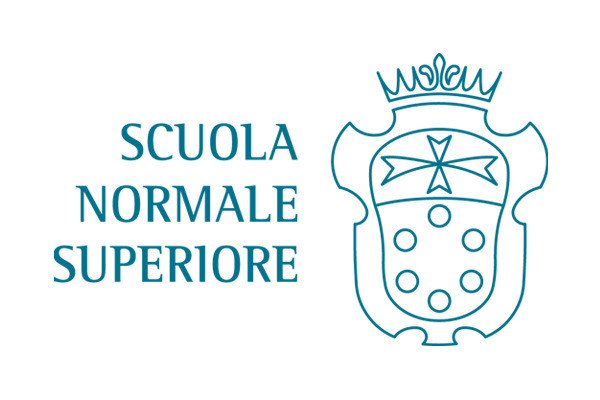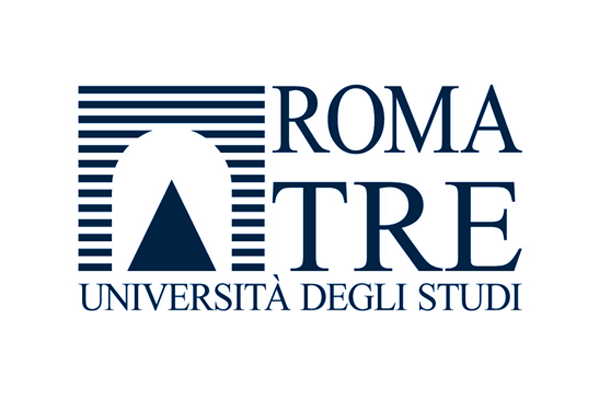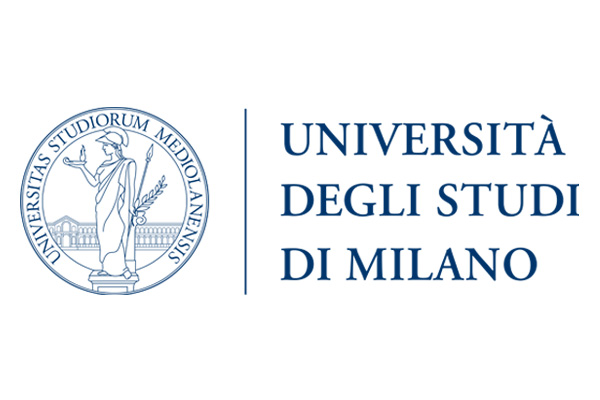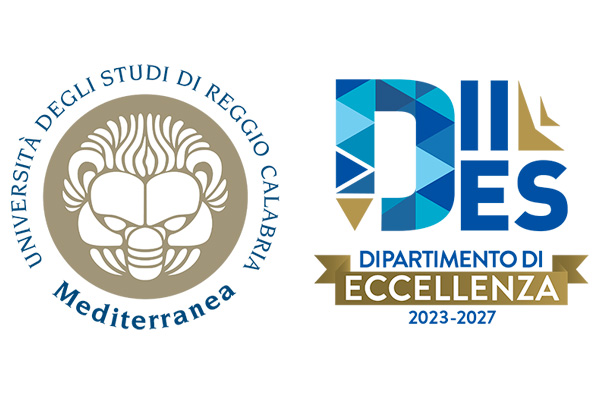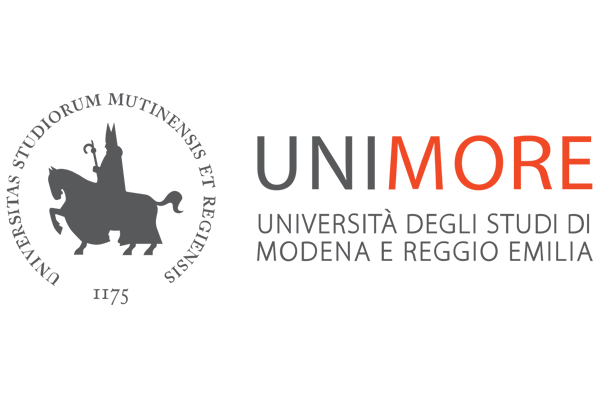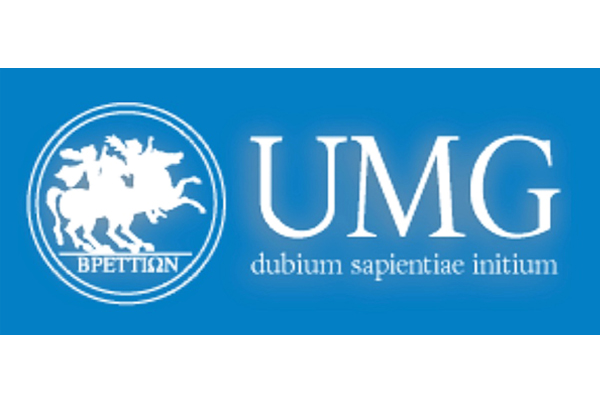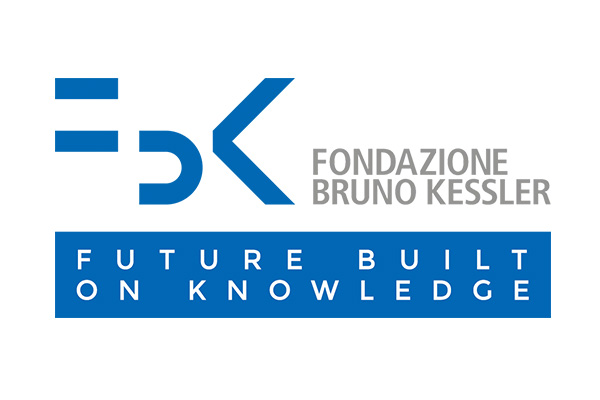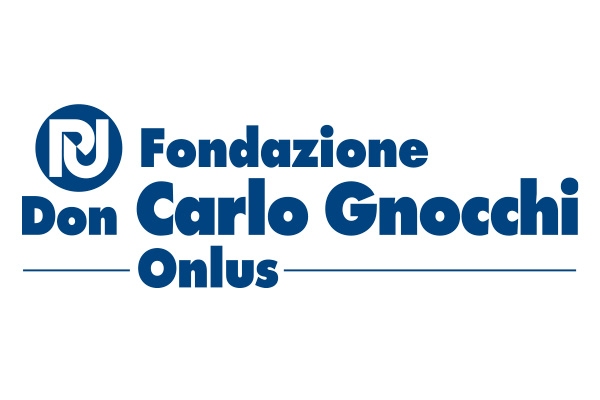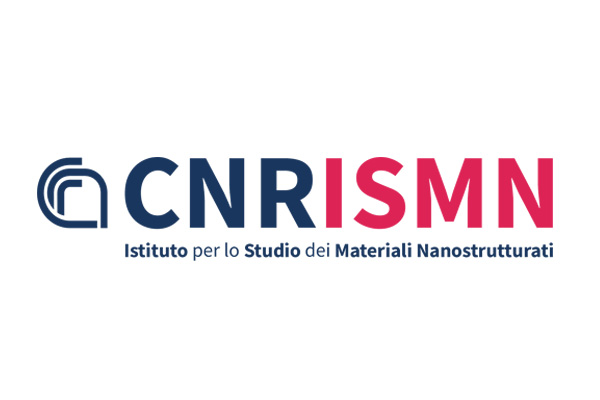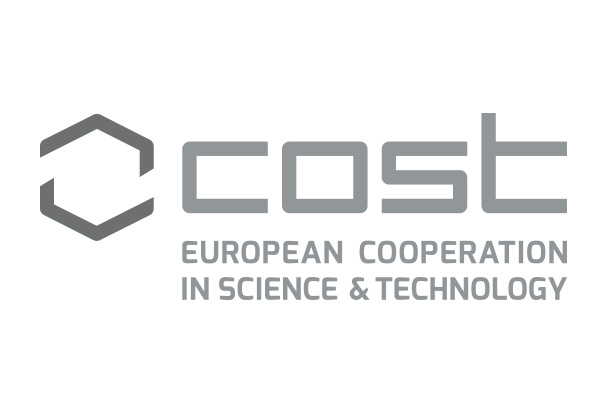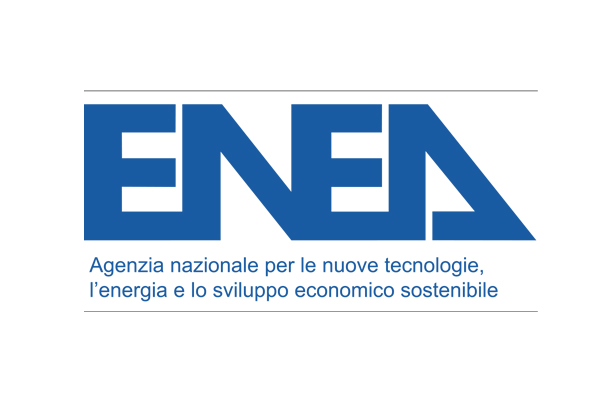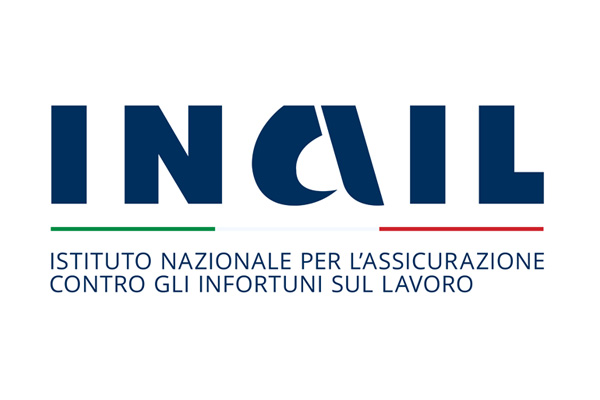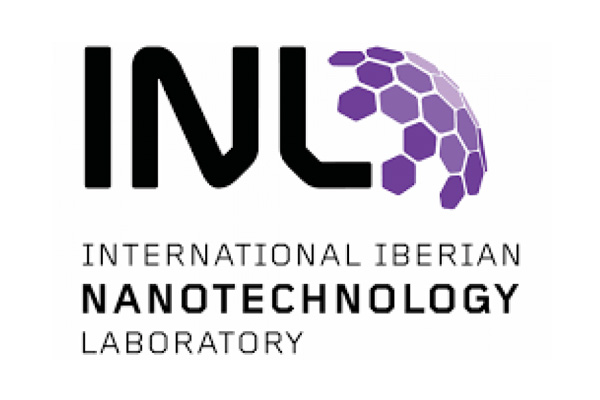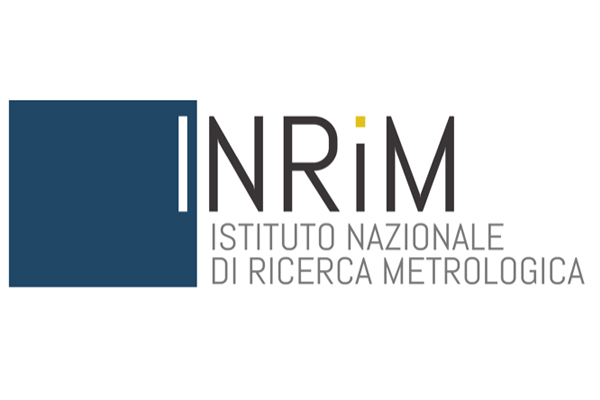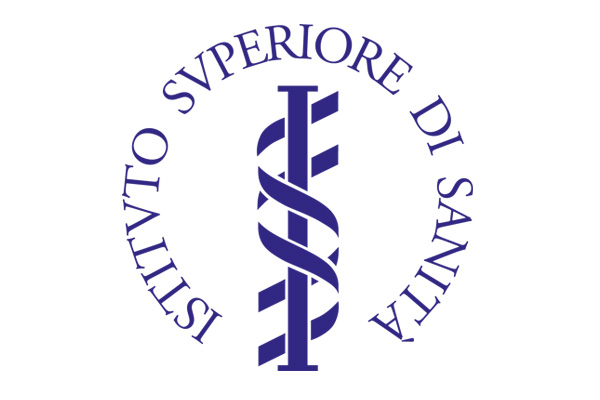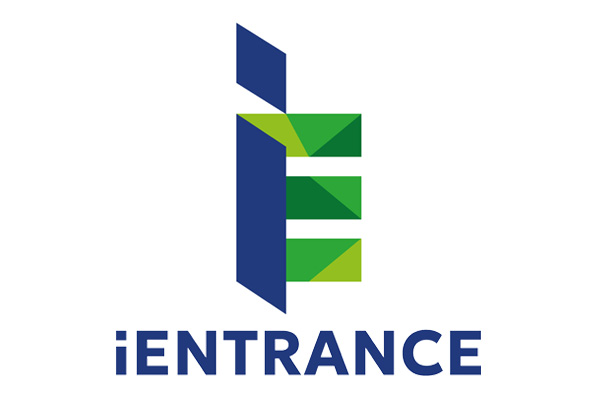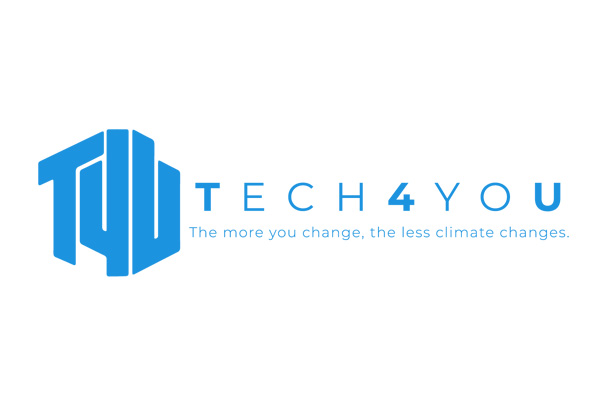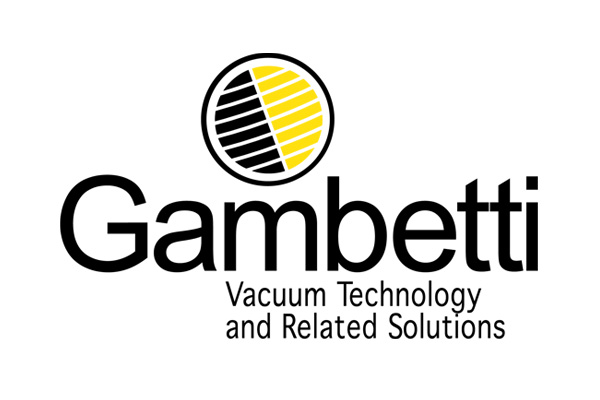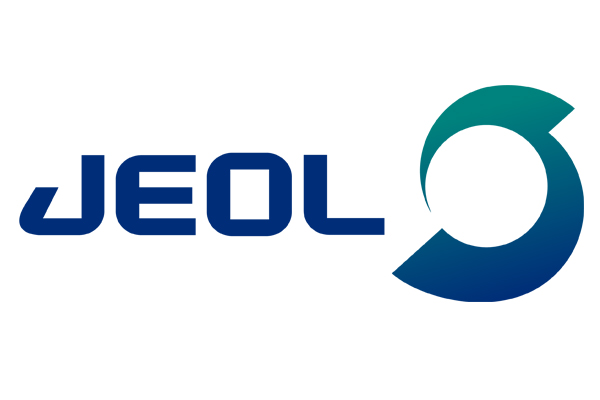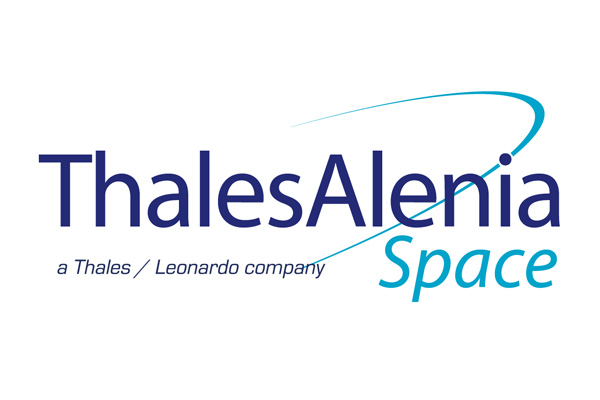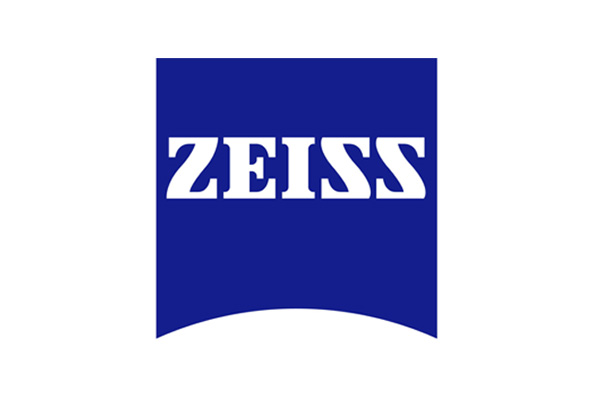updated on 24 August 2025
|
Featured Event II YoungInnovation 17-18-19 September |
||||||||||||
|
Chairs: SCIENTIFIC COMMITTEE PROGRAM COMMITTEE ORGANIZING BOARD |
||||||||||||
| General coordination: | ||||||||||||
 |
||||||||||||
|
Researchers have always played a fundamental role in addressing complex global challenges. For this reason, NanoInnovation is committed to encouraging and promoting the participation of young researchers (under 35) within the scientific community, while also supporting their careers through dedicated mentoring activities. In line with these goals, Young Innovation has grown into a semi-independent event, now in its fifth edition, which will take place from 15 to 19 September 2025. Year after year, the initiative continues to expand, featuring an ever-increasing number of leading contributors and focusing on the researchers of tomorrow. Young Innovation is now a well-defined event consisting of three days of discussions, organized into 90-minute sessions. Specifically, the program includes: two parallel tracks with sessions dedicated to the two main thematic areas: Material Sciences and Life Sciences. Each session will feature: The specific topics of the event have been selected by the Chairs and the NanoInnovation Organizing Committee, who have also appointed the members of both the Young Innovation Scientific Committee and the Organizing Committee. Ultimately, the goal of Young Innovation is to offer a platform for emerging scientists to share their research and build meaningful connections. The event serves not only as a showcase for innovative studies, but also as a catalyst for collaboration, inspiration, and the advancement of scientific knowledge. Young Innovation 2025 brings together the most promising emerging talents in Life Sciences and Materials Sciences for a dynamic and engaging three-day event. The program is thoughtfully designed to highlight the latest advancements and key achievements across both fields. The event is structured around two main parallel tracks, Life Sciences and Materials Sciences, which form the backbone of the conference and are expected to attract the majority of participants. In addition, a number of joint sessions will focus on interdisciplinary topics, encouraging dialogue and collaboration between the two domains. The accompanying infographics provide a visual overview of the event’s structure. |
||||||||||||
|
YoungInnovation 2025 is designed to bring together the brightest emerging talents across Life Sciences and Materials Science, offering a platform where innovation in these fields can intersect and flourish. Throughout the three days of the event, participants will engage with a range of sessions that reflect the cutting-edge research and technological advancements in both domains. These infographics here available encapsulate the essence of YoungInnovation 2025, offering a clear visual guide to the program’s structure and content. 17 September - the program of the day at-a-glance |
||||||||||||
| 17 September | ||||||||||||
| 09:00 - 10:30 Machine Learning Approach for Advanced Materials FE.II.1 - TT.I.H - FE.I.2 |
||||||||||||
| Session organized by iENTRANCE | ||||||||||||
 |
||||||||||||
| Chair: in definition | ||||||||||||
| This session explores the use of machine learning in the development of advanced materials. As material discovery grows more complex, data-driven methods enable faster property prediction and design. Topics include supervised/unsupervised learning, neural networks, and AI tools for materials science. Both theoretical and experimental contributions are welcome, including case studies in energy, catalysis, polymers, ceramics, and alloys. | ||||||||||||
| FE.II.1.1 TT.I.H.1 FE.I.2.1 |
Introductive Keynote Massimo CELINO ENEA Title in definition |
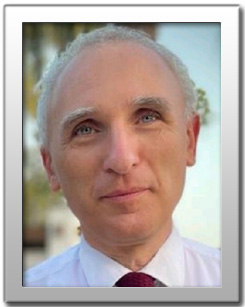 |
||||||||||
| FE.II.1.2 TT.I.H.2 FE.I.2.2 |
Leila SOHRABI-KASHANI School of Metallurgy and Materials Engineering, Iran University of Science and Technology,Tehran, Iran Effect of Additives on the Microscructure and structure of alumina nanofibers as catalyst support for methane combustion: a Machine Learning approach to Additive Selection |
 |
||||||||||
| FE.II.1.3 TT.I.H.3 FE.I.2.3 |
Andrea CORRADINI University of Trento Scalable machine learning approach to light induced order disorder phase transitions with ab initio accuracy |
 |
||||||||||
| FE.II.1.4 TT.I.H.4 FE.I.2.4 |
in definition | 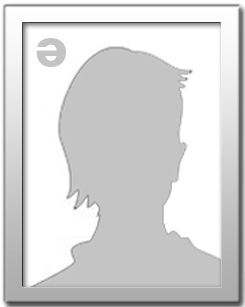 |
||||||||||
| FE.II.1.5 TT.I.H.5 FE.I.2.5 |
in definition |  |
||||||||||
| Round table on the Topic | ||||||||||||
| 09:00 - 10:30 Novel Therapeutic Frontiers for Brain Diseases: Emerging Strategies in Drug Delivery, Gene Therapy, and Diagnosis FE.II.2 - TT.I.I |
||||||||||||
| Session organized by University Magna Graecia of Catanzaro | ||||||||||||
 |
||||||||||||
| Chair: Emanuela Fabiola CRAPARO, University of Palermo | ||||||||||||
| The treatment of brain diseases remains one of the greatest challenges in modern medicine, primarily due to the complexity of the Central Nervous System (CNS) and the presence of the Blood–Brain Barrier (BBB), which limits the efficacy of many therapeutic agents. This session will explore recent advances in the therapeutic management of neurological diseases, including neurodegenerative diseases, brain tumors and CNS injuries. The session will highlight emerging strategies in drug delivery, focusing on platforms that enhance CNS bioavailability and specificity such as targeted nanocarriers, dual-targeting systems, and non-invasive delivery routes. Moreover, cutting-edge developments in gene therapy and neuroregenerative approaches, such as stem cell-based therapy, biomaterials, and bioactive molecules, which promote neuronal survival and repair, will be explored. This session aims to bring together interdisciplinary perspectives from neuroscience, bioengineering, and precision medicine to foster dialogue on novel therapeutic frontiers with translational potential for treating complex brain diseases. | ||||||||||||
| FE.II.2.1 TT.I.I.1 |
Introductive Keynote Delia MANDRACCHIA University of Brescia Dual-Targeting Strategies for Brain Drug Delivery |
 |
||||||||||
| FE.II.2.2 TT.I.I.2 |
Luigi CIROLO Sapienza University of Rome title in definition |
 |
||||||||||
| FE.II.2.3 TT.I.I.3 |
Roberta GRILLO CNR-Nanotec Electric Field enhancement of functionalized NPs for Targeted Cancer Therapy in Glioblastoma |
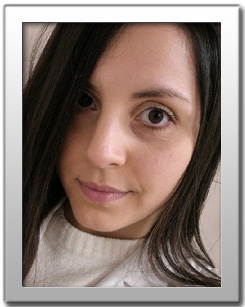 |
||||||||||
| FE.II.2.4 TT.I.I.4 |
Martina GERLI Fondazione Don Carlo Gnocchi Extracellular Vesicles as biomarkers for rehabilitation recovery in stroke patients: the PRISMA study |
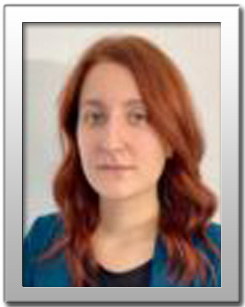 |
||||||||||
| FE.II.2.5 TT.I.I.5 |
Anna TOGNON University of Naples "Federico II" Development of a gene therapy approach based on gene editing of hematopoietic stem cells in a mouse model of X-linked adrenoleukodystrophy (X-ALD) |
 |
||||||||||
| Round table on the Topic | ||||||||||||
| 10:50 - 11:30 Flash Presentations by Young Researchers in Life Sciences FE.II.2b - IS.I.D |
||||||||||||
|
||||||||||||
| 11:30 - 13:00 2D Materials FE.II.3 - TT.II.I - FE.I.3 |
||||||||||||
| Session organized by iENTRANCE | ||||||||||||
 |
||||||||||||
| Chair: in definition | ||||||||||||
| 2D materials, are materials extended across two dimensions (length and width) but with thickness reduced to an atomic or molecular level. Well-known examples include graphene Transition Metal Dichalcogenides (TMDCs) and MXenes. The scientific community is captivated by 2D materials for a multitude of compelling reasons, driven by their unique properties, which are often unmatched in the conventional 3D world: exceptional electronic conductivity, optical transparency, and unprecedented mechanical strength. These characteristics make them ideal for revolutionizing electronics (faster transistors, flexible devices), sensor technology (ultra-sensitive sensors), and the energy and telecommunications sectors. Their versatility opens new frontiers in materials science and engineering. | ||||||||||||
| FE.II.3.1 TT.II.I.1 FE.I.3.1 |
Introductive Keynote Mattia BARTOLI - CV Polytechnic University of Turin Hydrogen production through thermal degradation of confined systems |
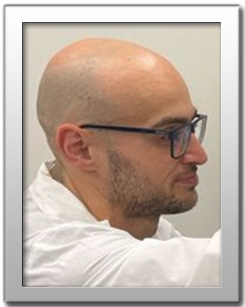 |
||||||||||
| FE.II.3.2 TT.II.I.2 FE.I.3.2 |
Cristiana MASTROPIERRO Polytechnique of Turin Electrochemical Exfoliation of TMD Flakes for Thermoelectric Applications |
 |
||||||||||
| FE.II.3.3 TT.II.I.3 FE.I.3.3 |
Mattia CAPECCIA Sapienza University of Rome Chirality-Modulated Pressure Response of Organic-Inorganic Interactions in Hybrid Perovskites |
 |
||||||||||
| FE.II.3.4 TT.II.I.4 FE.I.3.4 |
Federico OLIVIERI CNR-IPCB Reduced graphene oxide based multifunctional coatings for advanced textile applications |
 |
||||||||||
| FE.II.3.5 TT.II.I.5 FE.I.3.5 |
Pierpaolo BASSETTI - CV Sapienza university of Rome Strain induced room-temperature valley coherence in monolayer Transition Metal Dichalcogenides |
 |
||||||||||
| Round table on the Topic | ||||||||||||
| 11:30 - 13:00 Nanotechnology in Tissue Engineering FE.II.4 - TT.II.J |
||||||||||||
| Session organized by University Magna Graecia of Catanzaro | ||||||||||||
 |
||||||||||||
| Chair: Giovanna DELLA PORTA & Christian CELIA, University of Salerno | ||||||||||||
| This session explores the intersection of nanomedicine and tissue engineering, two rapidly advancing fields revolutionizing modern healthcare. By leveraging nanotechnology, researchers can develop smart delivery systems for drugs and growth factors, fabricate nanoscale scaffolds for tissue regeneration, and engineer cell-nanoparticle interactions for enhanced healing. We will discuss recent advances, translational challenges, and the potential for nanotechnology to create fully functional, biomimetic tissues. | ||||||||||||
| FE.II.4.1 TT.II.J.1 |
Introductive Keynote Paolo NETTI University of Naples "Federico II" Nanotechnology in Tissue Engineering: Challenges and Reality |
 |
||||||||||
| FE.II.4.2 TT.II.J.2 |
in definition |  |
||||||||||
| FE.II.4.3 TT.II.J.3 |
in definition |  |
||||||||||
| FE.II.4.4 TT.II.J.4 |
in definition |  |
||||||||||
| FE.II.4.5 TT.II.J.5 |
in definition |  |
||||||||||
| Round table on the Topic | ||||||||||||
| 14:00 - 15:30 Quantum Materials and Technologies FE.II.5 - TT.III.H |
||||||||||||
| Session organized by Sapienza University of Rome | ||||||||||||
 |
||||||||||||
| Chair: in definition | ||||||||||||
| Quantum materials are systems in which quantum effects—such as entanglement, topology, and strong electronic correlations—give rise to novel and often unexpected physical properties. These materials form the foundation for a new generation of quantum technologies, including quantum computing, sensing, and secure communication. This session brings together advances in the discovery, design, and manipulation of quantum materials, alongside progress in integrating them into functional devices. By bridging fundamental science with technological applications, the session highlights how quantum materials are enabling breakthroughs across condensed matter physics, materials science, and quantum engineering. |
||||||||||||
| FE.II.5.1 TT.III.H.1 |
Introductive Keynote Leonetta BALDASSARRE Sapienza University of Rome Title in definition |
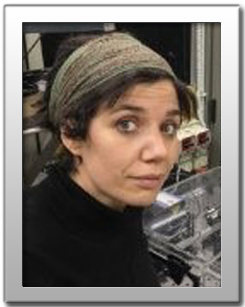 |
||||||||||
| FE.II.5.2 TT.III.H.2 |
Erica FRAGOMENI - CV Sapienza University of Rome Modifications of electron-phonon coupling in K-doped bilayer graphene studied by means of infrared resonance Raman spectroscopy |
 |
||||||||||
| FE.II.5.3 TT.III.H.3 |
Beatrice D'ALÒ - CV Synchrotron SOLEIL and Sapienza University of Rome Inducing the exciton-to-trion conversion in monolayer WS2 under pressure |
 |
||||||||||
| FE.II.5.4 TT.III.H.4 |
Fabrizio CIENZO - CV Sapienza University of Rome Quantum emitters in hexagonal boron nitride in ultra-high vacuum conditions |
 |
||||||||||
| FE.II.5.5 TT.III.H.5 |
Valentina CARPENELLA Leonardo Quantum Labs Reaserch at Leonardo Quantum Labs |
 |
||||||||||
| Round table on the Topic | ||||||||||||
| 14:00 - 15:30 Bioinspired Platform and Lipid Nanoparticles for Genetic Material Delivery FE.II.6 - TT.III.I |
||||||||||||
| Session organized by University Magna Graecia of Catanzaro | ||||||||||||
 |
||||||||||||
| Chair: Antonella BARONE, University Magna Graecia of Catanzaro | ||||||||||||
| Emerging strategies in gene delivery are increasingly turning to bioinspired platforms that mimic or repurpose natural carriers such as exosomes, extracellular vesicles, and hybrid nanostructures. This session explores how these biologically derived or biomimetic systems are redefining the landscape of genetic material transport, offering promising alternatives to conventional synthetic vectors. Leveraging the inherent advantages of natural carriers—such as biocompatibility, low immunogenicity, and innate targeting capabilities—bioinspired platforms enable more effective and precise delivery of nucleic acids, including mRNA, siRNA, and CRISPR components. Hybrid systems that combine biological and synthetic elements further expand the possibilities for customization and functionalization. The session will highlight recent advances in the engineering, functionalization, and translational application of these platforms, with a focus on their potential to address current limitations in gene therapy, vaccine development, and molecular medicine. | ||||||||||||
| FE.II.6.1 TT.III.I.1 |
Introductive Keynote Alessia BROSSA University of Turin Extracellular Vesicle-Based Systems for Nucleic Acid Delivery: From Natural Carriers to Engineered Hybrids |
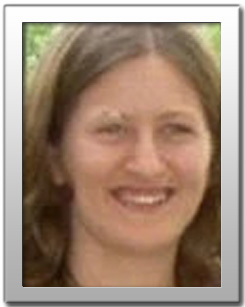 |
||||||||||
| FE.II.6.2 TT.III.I.2 |
Teresa SILVESTRI University of Naples "Federico II" Harnessing siRNA delivery to the lungs through extracellular vesicles-coated nanoparticles |
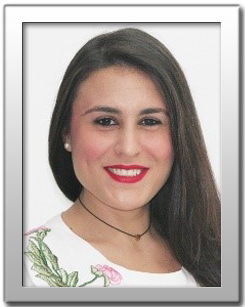 |
||||||||||
| FE.II.6.3 TT.III.I.3 |
Federica MONTELLA University of Salerno Microfluidic-based encapsulation of amino acids in lipid nanocarriers via electrostatic interactions |
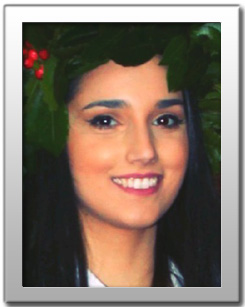 |
||||||||||
| FE.II.6.4 TT.III.I.4 |
Davide DANZI University of Verona eVLPs engineering: the potential of a bio-inspired nanotechnology for plant health |
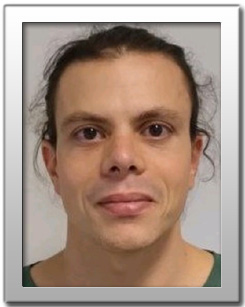 |
||||||||||
| FE.II.6.5 TT.III.I.5 |
Elena SQUICCIMARRO University "Aldo Moro" of Bari Development of novel gene therapy approaches for the treatment of renal fibrosis in diabetic kidney disease |
 |
||||||||||
| Round table on the Topic | ||||||||||||
| 16:00 - 17:30 The Key Role of Multi-Physics Simulations in the Energy Transition and Sustainability FE.II.7 - TT.IV.D - WS.I.4 |
||||||||||||
| Session organized by Polytechnic University of Turin | ||||||||||||
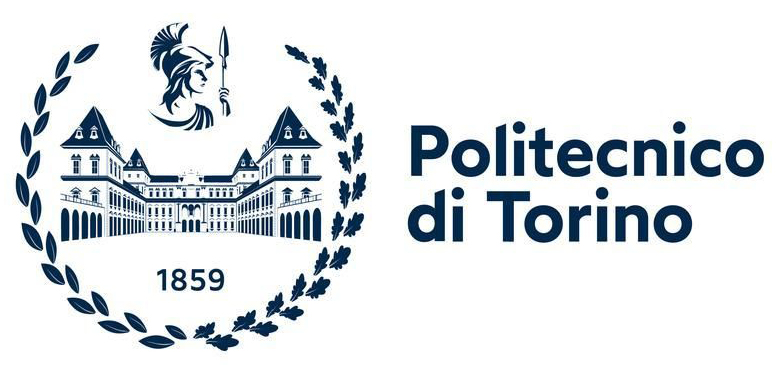 |
||||||||||||
| Chair: Giulia MASSAGLIA, Polytechnic University of Turin | ||||||||||||
| The increasing complexity of modern energy systems requires advanced tools to support their design, optimization, and real-time monitoring. Multiphysics simulations, which integrate various physical domains such as thermal, fluid dynamic, electrical, and structural behaviors, play a pivotal role in capturing the coupled phenomena that govern energy devices. These simulations form the foundation for the development of Digital Twins—virtual replicas of physical systems capable of mirroring their real-time state and predicting future behavior under different operational scenarios. By enabling high-fidelity modeling and dynamic updates through real-world data, Digital Twins can significantly enhance decision-making, predictive maintenance, and overall system efficiency. This work highlights the strategic role of multiphysics modeling in the development of reliable Digital Twins for energy applications, presenting key challenges and opportunities in this rapidly evolving field. | ||||||||||||
| FE.II.7.1 TT.IV.D.1 WS.I.4.1 |
Introductive Keynote Nicolò VASILE Polytechnic University of Turin Title in definition |
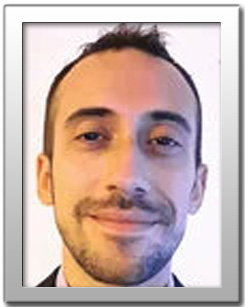 |
||||||||||
| FE.II.7.2 TT.IV.D.2 WS.I.4.2 |
in definition |  |
||||||||||
| FE.II.7.3 TT.IV.D.3 WS.I.4.3 |
in definition |  |
||||||||||
| FE.II.7.4 TT.IV.D.4 WS.I.4.4 |
in definition |  |
||||||||||
| FE.II.7.5 TT.IV.D.5 WS.I.4.5 |
in definition |  |
||||||||||
| Round table on the Topic | ||||||||||||
| 16:00 - 17:30 Polymeric Systems for RNA-Based Therapeutics FE.II.8 - TT.IV.I |
||||||||||||
| Session organized by University Magna Graecia of Catanzaro | ||||||||||||
 |
||||||||||||
| Chair: Delia MANDRACCHIA, University of Brescia | ||||||||||||
| The evolution of RNA-based therapeutics—ranging from mRNA to siRNA and gene editing technologies—led to a critical demand for delivery systems that ensure stability, specificity and controlled release. This session focuses on polymeric platforms as versatile and tunable carriers for RNA molecules in therapeutic applications. Polymeric systems, including both natural and synthetic polymers, offer distinct advantages such as structural flexibility, chemical modifications and responsiveness to physiological stimuli. These features allow for engineering of delivery systems capable of overcoming biological barriers, enhancing cellular uptake and reducing off-target effects. Through discussion of recent advancements in polymer chemistry, nanostructure design and translational performance, the session will explore how these systems are being optimized to meet the complex requirements of RNA-based therapies. Special attention will be given to clinical potential, biodegradability, and scalability for future pharmaceutical development. | ||||||||||||
| FE.II.8.1 TT.IV.I.1 |
Introductive Keynote Emanuela Fabiola CAPRARO University of Palermo Multicomponent Polymeric-based nanotools for siRNA inhalation |
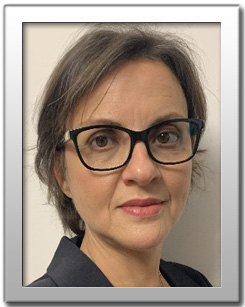 |
||||||||||
| FE.II.8.2 TT.IV.I.2 |
Salvatore Emanuele DRAGO University of Palermo Inulin-Based Nanogel for Pulmonary siRNA Delivery |
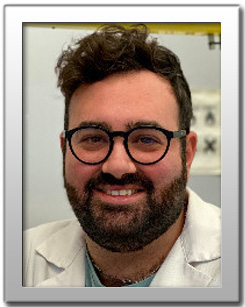 |
||||||||||
| FE.II.8.3 TT.IV.I.3 |
Daniela OREFICE University of Naples "Federico II" A "Matryoshka"-like delivery platform: microparticles-based microneedles encapsulating mRNA vaccine |
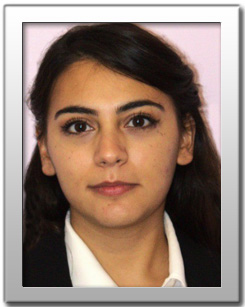 |
||||||||||
| FE.II.8.4 TT.IV.I.4 |
Carmela MAZZACANO University of Salerno Restoring Antitumor Immunity in Colorectal Cancer via Inulin based Nanoparticles Delivering anti–PD L1 siRNA |
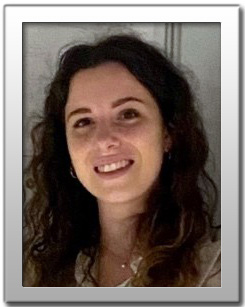 |
||||||||||
| FE.II.8.5 TT.IV.I.5 |
Michele GUIDA University of Naples "Federico II" Development of polyelectrolyte complexes for siRNA ocular delivery |
 |
||||||||||
| Round table on the Topic | ||||||||||||
| 17:30 - 19:00 Smart Nanomedicines and Targeting Properties FE.II.9 - BO.2.B |
||||||||||||
| Session organized by University Magna Graecia of Catanzaro | ||||||||||||
 |
||||||||||||
| Chair: Milena SORRENTI, University of Pavia | ||||||||||||
| Smart nanomedicines represent advanced nanoscale systems, particularly focusing on engineering methods. This session involves the design and functionalization of nanocarriers capable of active targeting, controlled release and real-time adaptation to complex physiological and pathological environments. A particular focus will be placed on targeting strategies—both passive and active—including ligand-receptor interactions and the use of disease-specific biomarkers to enhance selectivity. These features significantly improve therapeutic efficacy while minimizing systemic toxicity. The session will highlight recent developments in the integration of materials science, nanotechnology and molecular biology to realize next-generation nanomedicines. Emphasis will be placed on how these systems enable the rational design of precision therapeutics, supporting personalized interventions based on molecular disease signatures and patient-specific biological contexts. | ||||||||||||
| FE.II.9.1 B0.2.B.1 |
Introductive Keynote Gabriella COSTABILE University of Naples "Federico II" Delivering RNA to the lung |
 |
||||||||||
| FE.II.9.2 B0.2.B.2 |
Sonia PANICO Institute of Genetics and Biophysics "Adriano Buzzati-Traverso" CRISPR-Based Gene Therapy Targeting PlGF Signaling to Inhibit Pathological Neovascularization in Age-Related Macular Degeneration |
 |
||||||||||
| FE.II.9.3 B0.2.B.3 |
Samuele AMADORI University of Padua Targeting mitochondrial calcium by RNA-based therapy in inflammatory bowel diseases |
 |
||||||||||
| FE.II.9.4 B0.2.B.4 |
Ilaria DE CRISTOFARO University of Naples "Federico II" Functionalized Lipid Nanocarriers for Efficient siRNA Delivery: Design, Characterization, and Interaction with Tumor-Mimicking Membranes |
 |
||||||||||
| Round table on the Topic | ||||||||||||
| 19:00 - 20:00 ROUND TABLE |
||||||||||||
| Green Spritz - sorsi di sostenibilità | ||||||||||||
| Keynote Speaker: Claudia Letizia BIANCHI, University of Milan | ||||||||||||
| 18 September | ||||||||||||
| 09:00 - 10:30 Advanced Technologies for Diagnostics, Digitalization, and Preservation of Cultural Heritage FE.II.10 - TT.V.H |
||||||||||||
| Session organized by Sapienza University of Rome | ||||||||||||
 |
||||||||||||
| Chair: in definition | ||||||||||||
| This session will explore the wide range of advanced technologies that are changing the way we preserve, study and share Cultural Heritage. Contributions will range from innovative materials and nanostructured systems for cleaning, consolidation and long-term stabilization to non-invasive diagnostic and monitoring techniques that ensure the safety of conservation strategies. There will be a particular focus on spectroscopic and microscopic methods such as FTIR, Raman, UV-Vis, XRF, SEM, AFM and synchrotron-based approaches, which allow for the detailed characterization of materials and degradation processes at multiple scales. Alongside material-based approaches, digital tools such as high-resolution imaging, 3D modeling, and immersive platforms (VR/AR) will be considered for their transformative role in documentation, communication, and public engagement. Integrating digital twins, smart sensors, and environmental monitoring systems offers new possibilities for predictive conservation, providing dynamic strategies for risk prevention and the sustainable management of heritage sites and collections. By fostering dialogue between chemists, physicists, engineers, computer scientists and conservation scientists, the session will highlight how cross-disciplinary innovation can provide sustainable, effective and inclusive solutions for preserving and promoting Cultural Heritage in the 21st century. |
||||||||||||
| FE.II.10.1 TT.V.H.1 |
Introductive Keynote Maria Laura SANTARELLI Sapienza University of Rome Title in definition |
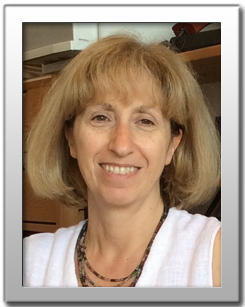 |
||||||||||
| FE.II.10.2 TT.V.H.2 |
Samuele BALDINI - CV University of Florence Structurally Tunable PDMS Xerogels via Microemulsion Templating for Controlled Solvent Delivery |
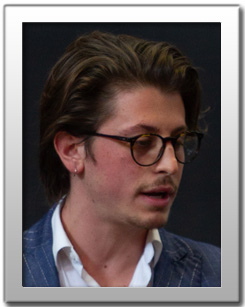 |
||||||||||
| FE.II.10.3 TT.V.H.3 |
Rocco CARCIONE - CV ENEA Gamma Irradiation for Cultural Heritage Preservation: Case Studies from Cellulose-Based Artefacts to Historical Documents |
 |
||||||||||
| FE.II.10.4 TT.V.H.4 |
Manuel BUCCIARELLI Sapienza University of Rome Structural reinforcement potential of crystalline nanocellulose (CNC) for the conservation of canvas paintings |
 |
||||||||||
| FE.II.10.5 TT.V.H.5 |
Francesca BOCCACCINI CNR An in-depth approach for studying the interactions between metal surfaces and protecting materials in cultural heritage applications |
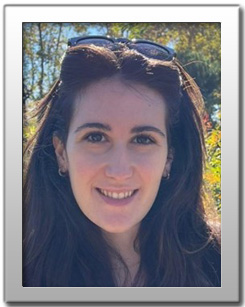 |
||||||||||
| Round table on the Topic | ||||||||||||
| 09:00 - 10:30 Advanced Biofabrication Technologies and Applications FE.II.11 - TT.V.I |
||||||||||||
| Session organized by University Magna Graecia of Catanzaro | ||||||||||||
 |
||||||||||||
| Chair: Carmine GENTILE, University of Tecnhnology Sydney, Australia & Michele CONTI, University of Pavia | ||||||||||||
| This session will explore cutting-edge advances in biofabrication technologies, focusing on innovative methods for the design and construction of biologically functional structures. Topics will include 3D bioprinting, biomaterial engineering, microfluidic platforms, and the integration of biofabrication with regenerative medicine, tissue engineering, and organ-on-chip applications. Speakers will highlight both the technological breakthroughs and the translational potential of these approaches, offering insights into current challenges and future directions in the field. | ||||||||||||
| FE.II.11.1 TT.V.I.1 |
Introductive Keynote Gianluca CINDONIO University of Pavia Advanced Biofabrication Technologies and Applications |
 |
||||||||||
| FE.II.11.2 TT.V.I.2 |
Luca CAFUERO University of Salento Oleogel's modification: from natural plasticization to wax reinforcement for 3D printing via Fused Filament Deposition |
 |
||||||||||
| FE.II.11.3 TT.V.I.3 |
NIZIOŁ Martyna Wroclaw University of Science and Technology Microalgae-enriched inks for coaxial 3D bioprinting: printed structures with perfusion channel |
 |
||||||||||
| FE.II.11.4 TT.V.I.4 |
in definition |  |
||||||||||
| FE.II.11.5 TT.V.I.5 |
in definition |  |
||||||||||
| Round table on the Topic | ||||||||||||
| 10:50 - 11:30 Flash Presentations by Young Researchers in Life Sciences FE.II.11b - IS.II.F |
||||||||||||
|
||||||||||||
| 11:30 - 13:00 Tomographic Techniques for Multiscale Imaging and Materials Characterization FE.II.12 - TT.VI.H |
||||||||||||
| Session organized by Sapienza University of Rome | ||||||||||||
 |
||||||||||||
| Chair: in definition | ||||||||||||
| Tomographic techniques have become indispensable tools for non-destructive, high-resolution imaging across a wide range of scientific and engineering fields. This session will explore recent advances in tomographic methods, ranging from X-ray Computed Tomography and Electron Tomography to advanced Optical and Synchrotron-based approaches that enable multiscale visualization of structural, morphological, and functional properties in both biological and material systems. Particular emphasis will be placed on developments that push the boundaries of spatial resolution, contrast mechanisms, data reconstruction, and multimodal integration. Contributions addressing applications in materials science, life sciences and energy-related technologies are especially welcome. This session aims to foster cross-disciplinary dialogue and highlight how tomographic imaging is shaping our understanding of complex systems from the nanoscale to the macroscale. | ||||||||||||
|
FE.II.12.1 |
Introductive Keynote Matteo FERRONI University of Brescia Title in definition |
 |
||||||||||
| FE.II.12.2 TT.VI.H.2 |
in definition |  |
||||||||||
| FE.II.12.3 TT.VI.H.3 |
in definition |  |
||||||||||
| FE.II.12.4 TT.VI.H.4 |
in definition |  |
||||||||||
| FE.II.12.5 TT.VI.H.5 |
in definition |  |
||||||||||
| Round table on the Topic | ||||||||||||
| 11:30 - 13:00 Bioadhesive Approaches for Drug Delivery FE.II.13 - TT.VI.I |
||||||||||||
| Session organized by University Magna Graecia of Catanzaro | ||||||||||||
 |
||||||||||||
| Chair: Maria Chiara CRISTIANO, University Magna Graecia of Catanzaro | ||||||||||||
| This session explores the latest advances in the development of adhesive formulations capable of overcoming clearance mechanisms and enhancing drug retention at mucosal and epithelial sites. Topics will cover the design of muco- and cytoadhesive systems, the interplay between physicochemical properties and adhesive strength and the role of biological interface dynamics in influencing drug release profiles. Recent work on stimuli-responsive and environment-adaptive bioadhesive materials will also be presented, highlighting innovations that allow for controlled, site-specific delivery. By examining preclinical and translational data, the session aims to provide insight into how bioadhesion can be harnessed to address clinical challenges such as low bioavailability, rapid clearance and the need for non-invasive, patient-friendly delivery routes. | ||||||||||||
| FE.II.13.1 TT.VI.I.1 |
Introductive Keynote Angela FABIANO University of Pisa Strategies for Evaluating Mucoadhesion in Chitosan-Based Pharmaceutical Systems |
 |
||||||||||
| FE.II.13.2 TT.VI.I.2 |
Mariasofia Perrucchini University of Pavia Chitosan-coated mucoadhesive fucoidan/poly-lysine nanogels for the prevention of inhaled corticosteroids-releated oral candidiasis |
 |
||||||||||
| FE.II.13.3 TT.VI.I.3 |
Jacopo FORTE University Sapienza of Rome Looking for the optimal coating for mucoadhesive isoniazid-liposomes for pulmonary infections: Chitosan vs ε-Pll |
 |
||||||||||
| FE.II.13.4 TT.VI.I.4 |
in definition |  |
||||||||||
| FE.II.13.5 TT.VI.I.5 |
in definition |  |
||||||||||
| Round table on the Topic | ||||||||||||
| 14:00 - 15:30 Impacts of Nanomaterials and New Advanced Materials on Health and Safety in the Workplace FE.II.14 - TT.VII.H |
||||||||||||
| Session organized by INAIL | ||||||||||||
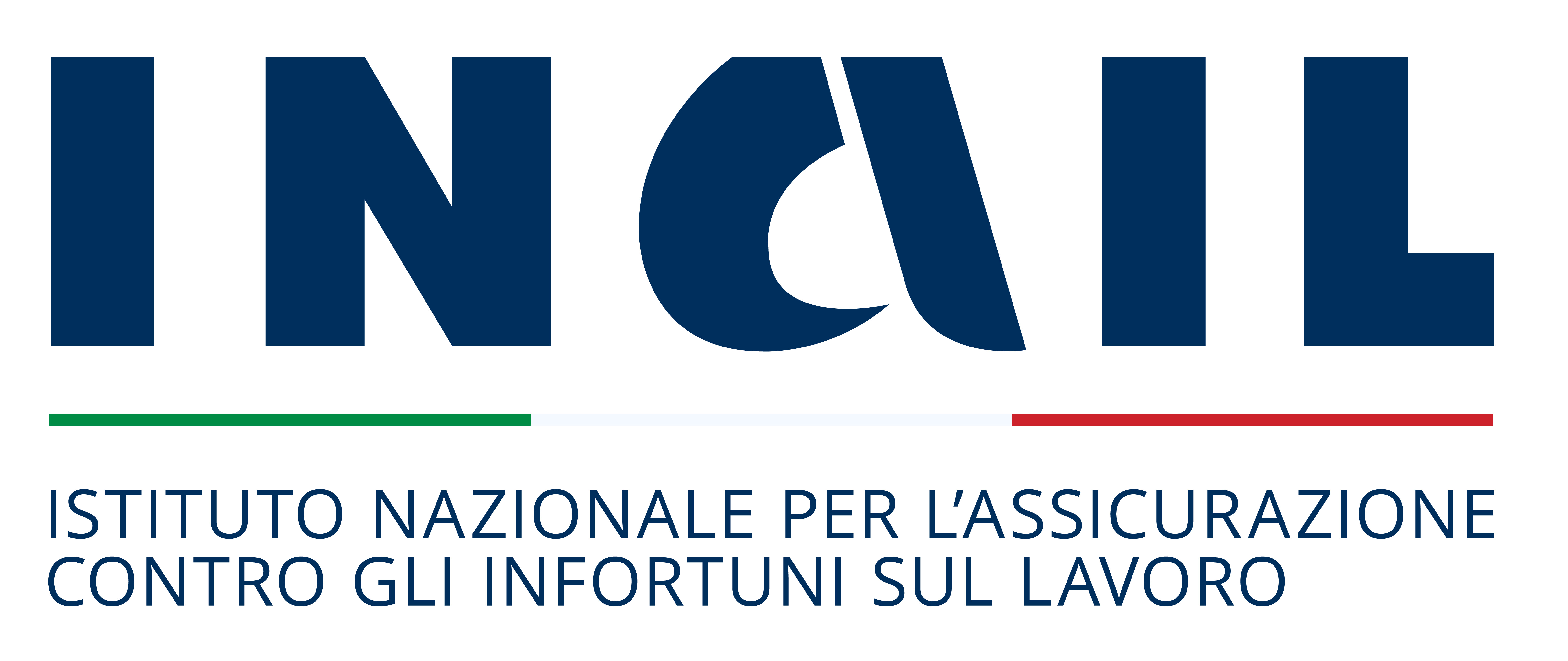 |
||||||||||||
| Chair: Fabio BOCCUNI, INAIL | ||||||||||||
| The manufacturing and use of nanomaterials and new advanced materials introduces emerging sources of emission of nanoscale particles in the work environments. The concerns are closely linked to the potential health effects of ultrafine particles for exposed workers, although the scientific evidence should be still improved to support this relationship. New safe and sustainable by-design approaches have been developed by application of the precautionary principle, to support enterprises in reducing the gap between the rapid growing of products marketplace and the risk management actions needed for the regulatory requirements. In parallel, opportunities provided by the application of the innovative properties of nanotechnologies may contribute to improve occupational health and safety levels, also in applications to the traditional risks. In this view materials with new and enhanced properties could be integrated in sensors and new technological devices to support the early detection of harmful substances in the work environment (i.e. chemical, carcinogenic and biological agents). The scope of the session is to explore new methodological approaches and innovative risk assessment and monitoring tools to guarantee healthy and safe workplace in the near future. |
||||||||||||
| FE.II.14.1 TT.VII.H.1 |
Introductive Keynote Riccardo FERRANTE - CV INAIL Identification and characterization of airborne nanomaterials in multiple exposure workplace scenarios |
 |
||||||||||
| FE.II.14.2 TT.VII.H.2 |
Francesca SEBASTIANI Sapienza University of Rome Title in definition |
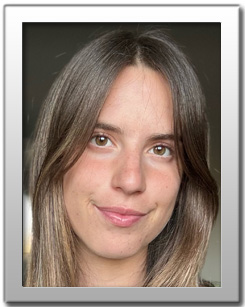 |
||||||||||
| FE.II.14.3 TT.VII.H.3 |
Chiara MARCOLUNGO University of Padua Investigating airborne emissions and toxicity of polyamide powders for additive manufacturing |
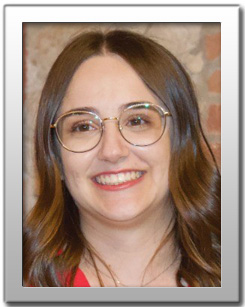 |
||||||||||
| FE.II.14.4 TT.VII.H.4 |
Virginia DI BASILIO INAIL Non invasive biomarkers to evaluate early effects on workers potentially exposed to NM |
 |
||||||||||
| FE.II.14.5 TT.VII.H.5 |
Renato GRIGOLON CAPELO - CV IIT Fluorescent Optical Sensor for Smart Detection of Nanoparticulate Pollutants in Workplaces |
 |
||||||||||
| Round table on the Topic | ||||||||||||
| 14:00 - 15:30 Advanced Approaches for Skin Delivery FE.II.15 - TT.VII.I |
||||||||||||
| Session organized by University Magna Graecia of Catanzaro | ||||||||||||
 |
||||||||||||
| Chair: Antonia MANCUSO, University Magna Graecia of Catanzaro | ||||||||||||
| This session surveys next‑generation strategies to overcome the stratum corneum barrier and achieve precise, safe, and patient‑centric topical and transdermal delivery. Talks will cover microneedle platforms (solid, dissolving, hydrogel-forming), stimuli‑responsive and ultradeformable nanocarriers (e.g., liposomes, transfersomes, ethosomes, SLNs) and physical enhancement techniques such as iontophoresis, sonophoresis, and laser ablation. Case studies will span small molecules, peptides, vaccines, and biologics for dermatological, systemic, and cosmetic indications. Emphasis will be placed on mechanistic modeling, advanced in vitro and ex vivo skin models (including organ‑on‑chip), quantitative penetration analytics, and the translational pathway—covering scalability, regulatory requirements, and safety. | ||||||||||||
| FE.II.15.1 TT.VII.I.1 |
Introductive Keynote Cristina PARISI University of Catania Light-Controlled Nitric Oxide Release from Hyaluronic Acid Derivatives for Skin Delivery |
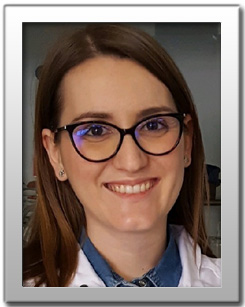 |
||||||||||
| FE.II.15.2 TT.VII.I.2 |
Antonio SILLETTA University "Magna Graecia" of Catanzaro title in definition |
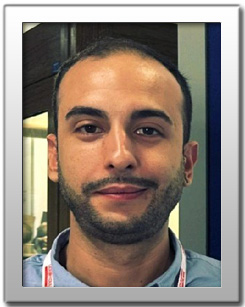 |
||||||||||
| FE.II.15.3 TT.VII.I.3 |
Paolo SANTAGOSTINI University of Padua Alginate-wpi-polysaccharide electrospun nanofibers crosslinked via maillard- type reaction in the treatment of cutaneous wounds |
 |
||||||||||
| FE.II.15.4 TT.VII.I.4 |
Barbara DE BERARDIS Italian National Institute of Health Titanium dioxide nanoparticles embedded in Gelatin hydrogel with photo-cross-linkable methacrylamide groups (GelMA) for wound healing |
 |
||||||||||
| FE.I.15.5 TT.VII.I.5 |
Hiba NATSHEH An-Najah National University Enhanced transdermal delivery and therapeutic effect of caryophyllene oxide via topical application in a transethosomal system |
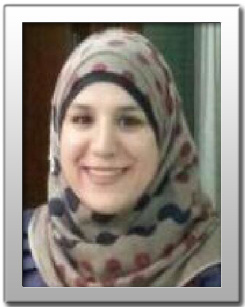 |
||||||||||
| Round table on the Topic | ||||||||||||
| 16:00 - 17:30 From Reality to Representation: Digital Twins and their Role in Future Research FE.II.16 - TT.VIII.D - WS.I.8 |
||||||||||||
| Session organized by Polytechnic University of Turin | ||||||||||||
 |
||||||||||||
| Chair: Giulia MASSAGLIA, Polytechnic University of Turin | ||||||||||||
| Digital Twins are emerging as a powerful paradigm to bridge the gap between the physical and digital worlds. Far beyond static models or offline simulations, Digital Twins are dynamic, continuously updated virtual counterparts of real systems - capable of supporting real-time monitoring, predictive analytics, and prescriptive decision-making. Their relevance spans from manufacturing to healthcare, from infrastructure management to biological systems. This symposium will open with a plenary lecture by Professor Andrea Matta from Politecnico di Milano, who will provide a comprehensive overview of the Digital Twin concept. Drawing from both historical foundations and recent research, Professor Matta will discuss key features, architectures, and classifications of Digital Twins - illustrating their transformative potential with practical examples from ongoing projects in the field of production systems and industrial automation. Following the plenary, the symposium will feature a series of short presentations by early-career researchers, highlighting innovative applications, methodological challenges, and interdisciplinary perspectives on the use of Digital Twins in various domains. The goal is to foster dialogue between established expertise and emerging ideas, and to explore how Digital Twins are shaping the future of research across disciplines. |
||||||||||||
| FE.II.16.1 TT.VIII.D.1 WS.I.8.1 |
Introductive Keynote Andrea MATTA Polytechnic University of Milan Title in definition |
 |
||||||||||
| FE.II.16.2 TT.VIII.D.2 WS.I.8.2 |
in definition |  |
||||||||||
| FE.II.16.3 TT.VIII.D.3 WS.I.8.3 |
in definition |  |
||||||||||
| FE.II.16.4 TT.VIII.D.4 WS.I.8.4 |
in definition |  |
||||||||||
| FE.II.16.5 TT.VIII.D.5 WS.I.8.5 |
in definition |  |
||||||||||
| Round table on the Topic | ||||||||||||
| 16:00 - 17:30 Inorganic Nanocarriers for Therapy, Diagnosis and Imaging FE.II.17 - TT.VIII.I |
||||||||||||
| Session organized by University Magna Graecia of Catanzaro | ||||||||||||
 |
||||||||||||
| Chair: Nicola D'AVANZO, University of Magna Graecia of Catanzaro | ||||||||||||
| Inorganic nanocarriers represent a diverse class of engineered materials with highly tunable physicochemical properties, enabling their use across a wide range of biomedical applications. This session will explore the development and optimization of inorganic platforms—including gold nanoparticles, silica-based carriers, iron oxide nanostructures, and other metal- or mineral-based systems—designed for either therapeutic delivery, diagnostic sensing, or biomedical imaging. Discussion will focus on how material composition, morphology, and surface chemistry influence biological interactions, functional performance, and application-specific outcomes. Examples will include carriers tailored for targeted drug delivery, contrast enhancement in imaging modalities such as MRI or CT, and biosensing for molecular diagnostics. ather than emphasizing multifunctionality, the session highlights the multifunctionality of inorganic sistems, in the clinical workflow, offering modularity, scalability and features for personalized medicine and biomedical research. | ||||||||||||
| FE.II.17.1 TT.VIII.I.1 |
Introductive Keynote Simone SPRIO CNR-ISSMC CaP nanoparticles for RNA delivery |
 |
||||||||||
| FE.II.17.2 TT.VIII.I.2 |
Beatrice BRUNO University Tor vergata of Rome Controlled Microfluidic Synthesis of Cerium Oxide Nanoparticles |
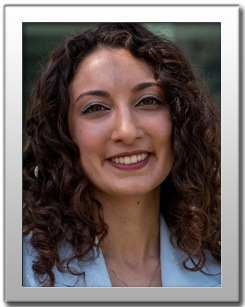 |
||||||||||
| FE.II.17.3 TT.VIII.I.3 |
Diego LIPANI Roma Tre University Protective effect of gold and silver nanoparticles functionalized against ionizing radiation induced oxidative stress |
 |
||||||||||
| FE.II.17.4 TT.VIII.I.4 |
Alessandro FERRARINI Roma Tre University Study of the combined effect of gold nanorods and radiation on tumor cell metabolism via MRS technique |
 |
||||||||||
| FE.II.17.5 TT.VIII.I.5 |
Elena OLIVIERI Roma Tre University AuNP-based drug delivery: Cellular uptake and immune response |
 |
||||||||||
| Round table on the Topic | ||||||||||||
| 17:30 - 19:00 Flash Presentations by Young Researchers in Life Sciences FE.II.17b - BO.3.B |
||||||||||||
|
||||||||||||
| 19 September | ||||||||||||
| 09:00 - 10:30 Multi-technique and Multiscale Characterization of Materials: Bridging Structure and Function FE.II.18 - TT.IX.H |
||||||||||||
| Session organized by Sapienza University of Rome | ||||||||||||
|
Understanding the structural, chemical, and functional properties of materials across different length scales is essential for optimizing their performance and mechanisms. This session will highlight recent advances in multiscale characterization, integrating electron microscopy, spectroscopic techniques, surface and porosity analysis, X-ray-based methods and scanning probe microscopy (AFM and related techniques), enabling nanoscale resolution of electronic, mechanical, and chemical properties, as well as in situ and operando studies that capture material behaviour under real working conditions. The session will explore how a multi-technique approach allows for a deeper correlation between structure, morphology, and functional properties, providing key insights into the understanding of links between performances and properties. This Young Innovation session spotlights how experiments and simulations work together to accelerate materials discovery and technological uptake across organic, inorganic, bio and hybrid systems. We open with a 30-minute keynote by Dr. Alessandro Mattoni on how atomistic and multiscale modeling can envisage novel materials and mechanisms, illustrated with perovskite case studies, and on the practical limits and opportunities of today’s toolchain (validation, transferability, data quality), with AI as a helper. Four short talks by under-35 researchers then present concrete co-design workflows: tying models to fast/in-operando experiments to watch processes in real time, and closing the loop so measurements inform models and models suggest testable design rules. |
||||||||||||
| Chair: in definition | ||||||||||||
| FE.II.18.1 TT.IX.H.1 |
in definition |  |
||||||||||
| FE.II.18.2 TT.IX.H.2 |
Anna LAŠTOVIČKOVÁ - CV Department of Physical and Macromolecular Chemistry, Faculty of Science, Charles University,Prague, Czech Republic Stabilizing single atoms on 2D zeolites to develop sustainable catalysts |
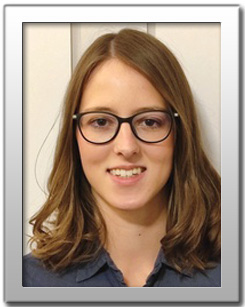 |
||||||||||
| FE.II.18.3 TT.IX.H.3 |
Riccardo PALLUCCHI - CV Sapienza University of Rome Nitrogen-induced strain in highly mismatched III-V heterostructured nanowires: a Raman spectroscopy investigation |
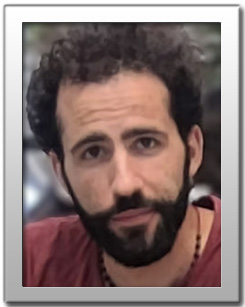 |
||||||||||
| FE.II.18.4 TT.IX.H.4 |
in definition |  |
||||||||||
| FE.II.18.5 TT.IX.H.5 |
in definition |  |
||||||||||
| Round table on the Topic | ||||||||||||
| 09:00 - 10:30 Smart Health: Innovations at the Crossroads of Science and Technology FE.II.19 - TT.IX.I |
||||||||||||
| Session organized by University Magna Graecia of Catanzaro | ||||||||||||
 |
||||||||||||
| Chair: Andrea QUATTRONE, University Magna Graecia of Catanzaro | ||||||||||||
| This session explores the growing role of smart technologies and interdisciplinary solutions in transforming healthcare and disease management. From artificial intelligence and biomedical engineering to data analytics and behavioral sciences, the session welcomes contributions that showcase innovative and integrated approaches to improving prevention, diagnosis, treatment, and health monitoring. The goal is to foster cross-disciplinary dialogue and highlight the impact of emerging technologies across clinical, public health, and personal care contexts. | ||||||||||||
| FE.II.19.1 TT.IX.I.1 |
Introductive Keynote Giuseppe SCANIELLO University of Salerno Leveraging AI and Smart Technologies: Cross-Disciplinary Solutions in Healthcare and Disease Management |
 |
||||||||||
| FE.II.19.2 TT.IX.I.2 |
in definition |  |
||||||||||
| FE.II.19.3 TT.IX.I.3 |
in definition |  |
||||||||||
| FE.II.19.4 TT.IX.I.4 |
in definition |  |
||||||||||
| FE.II.19.5 TT.IX.I.5 |
in definition |  |
||||||||||
| Round table on the Topic | ||||||||||||
| 11:30 - 13:00 Co-Design for Materials & Technology Innovation: Experiments and simulations in concert, with a touch of AI FE.II.20 - TT.X.H |
||||||||||||
| Session organized by University of Ferrara | ||||||||||||
 |
||||||||||||
| Chair: in definition | ||||||||||||
| This Young Innovation session spotlights how experiments and simulations work together to accelerate materials discovery and technological uptake across organic, inorganic, bio and hybrid systems. We open with a 30-minute keynote by Dr. Alessandro Mattoni on how atomistic and multiscale modeling can envisage novel materials and mechanisms, illustrated with perovskite case studies, and on the practical limits and opportunities of today’s toolchain (validation, transferability, data quality), with AI as a helper. Four short talks by under-35 researchers then present concrete co-design workflows: tying models to fast/in-operando experiments to watch processes in real time, and closing the loop so measurements inform models and models suggest testable design rules. A 30-minute round table will map what’s next: how real-time probes can shorten iteration cycles, how to turn measurements + simulations into actionable rules for technology, and where generative/explainable AI can simply help surface the key variables, useful for empirical relations, materials screening, or as seeds for new theories. |
||||||||||||
| FE.II.20.1 TT.X.H.1 |
in definition |  |
||||||||||
| FE.II.20.2 TT.X.H.2 |
in definition |  |
||||||||||
| FE.II.20.3 TT.X.H.3 |
in definition |  |
||||||||||
| FE.II.20.4 TT.X.H.4 |
in definition |  |
||||||||||
| FE.II.20.5 TT.X.H.5 |
in definition |  |
||||||||||
| Round table on the Topic | ||||||||||||
| 11:30 - 13:00 AI-Powered Approaches in Neurodegenerative diseases FE.II.21 - TT.X.I |
||||||||||||
| Session organized by University Magna Graecia of Catanzaro | ||||||||||||
 |
||||||||||||
| Chair: Alessia BRAMANTI, University of Salerno | ||||||||||||
| Artificial intelligence is rapidly becoming a key enabler in the study and clinical management of neurodegenerative diseases, where complexity and heterogeneity challenge conventional methodologies. This session focuses on AI-driven strategies for improving early detection, patient stratification, disease modeling and therapeutic development in conditions such as Alzheimer's, Parkinson's, ALS and related disorders. Topics will include the use of machine learning for multimodal data integration-encompassing imaging, genomics, proteomics, and clinical records-as well as the development of predictive models for disease onset, progression and treatment response. Key challenges such as model interpretability, cross-cohort performance, and applicability in clinical settings will also be discussed. By showcasing interdisciplinary efforts at the intersection of neuroscience, data science and clinical research, the session aims to provide a comprehensive overview of how AI technologies are reshaping our understanding and management of neurodegenerative conditions. | ||||||||||||
| FE.II.21.1 TT.X.I.1 |
Introductive Keynote Andrea QUATTRONE University Magna Graecia of Catanzaro Artificial intelligence and imaging data in neurodegenerative diseases |
 |
||||||||||
| FE.II.21.2 TT.X.I.2 |
in definition |  |
||||||||||
| FE.II.21.3 TT.X.I.3 |
in definition |  |
||||||||||
| FE.II.21.4 TT.X.I.4 |
in definition |  |
||||||||||
| FE.II.21.5 TT.X.I.5 |
in definition |  |
||||||||||
| Round table on the Topic | ||||||||||||
| 14:00 - 15:30 Translational Systems for Infectious Disease Management FE.II.22 - TT.XI.H |
||||||||||||
| Session organized by University Magna Graecia of Catanzaro | ||||||||||||
 |
||||||||||||
| Chair: Amedeo AMEDEI, University "G.D'Annunzio" of Chieti-Pescara | ||||||||||||
| This session explores the increasing importance of translational systems in biotechnology-based approaches to infectious disease control. As microbial resistance rises and novel pathogens emerge, bridging molecular research with clinical and public health applications has become a central challenge. By integrating systems biology, multi-omics data, and computational modeling, translational strategies are enabling more precise diagnostics, the development of next-generation therapeutics, and faster, more adaptive responses to outbreaks. The session focuses on scalable, interdisciplinary frameworks that support the efficient transition from bench to bedside. Case studies and recent advances will be analyzed to illustrate how translational biotechnology is reshaping infectious disease management. Particular attention is given to technologies and approaches that demonstrate real-world applicability, scientific rigor, and cross-sectoral collaboration. | ||||||||||||
| FE.II.22.1 TT.XI.H.1 |
Introductive Keynote Ivana D'ANGELO University of Campania "Luigi Vanvitelli" Nanocarriers for Antimicrobial Therapy: Innovations in Infectious Disease Treatment |
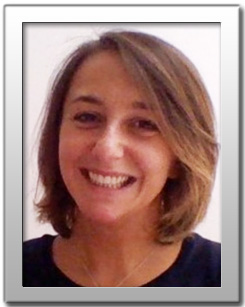 |
||||||||||
| FE.II.22.2 TT.XI.H.2 |
Federica ZACCAGNINI Sapienza University of Rome Multifunctional FFP2 facemask enables pathogens detection and white light-triggered disinfection through hybrid nanomaterials |
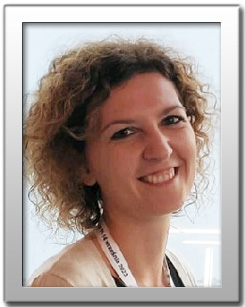 |
||||||||||
| FE.II.22.3 TT.XI.H.3 |
Irene SEGATO University of Pavia Oleic Acid Encapsulated in β-Cyclodextrin: Characterization and Antimicrobial Assessment |
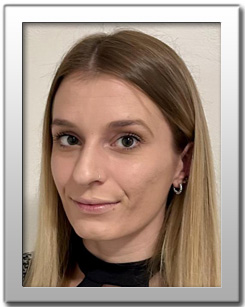 |
||||||||||
| FE.II.22.4 TT.XI.H.4 |
Martina LA MACCHIA Sapienza University of Rome Biocompatible Electrospun Nanofibers for Controlled Antimicrobial Peptide Release |
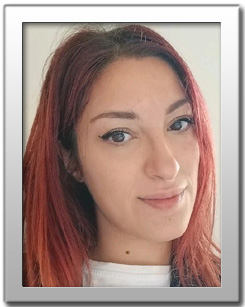 |
||||||||||
| Round table on the Topic | ||||||||||||
| 16:00 - 17:30 Flash Presentations by Young Researchers in Life Sciences |
||||||||||||
|
||||||||||||
| 16:00 - 17:30 Title in definition FE.II.23 - TT.XII.H |
||||||||||||
| co-organized with ... to be defined Chair: in definition |
||||||||||||
| FE.II.23.1 TT.XII.I.1 |
in definition |  |
||||||||||
| FE.II.23.2 TT.XII.I.2 |
in definition |  |
||||||||||
| FE.II.23.3 TT.XII.I.3 |
in definition |  |
||||||||||
| FE.II.23.4 TT.XII.I.4 |
in definition |  |
||||||||||
| FE.II.23.5 TT.XII.I.5 |
in definition |  |
||||||||||
| Round table on the Topic | ||||||||||||
| 17:30 - 20:00 Cocktail & Social |
||||||||||||

